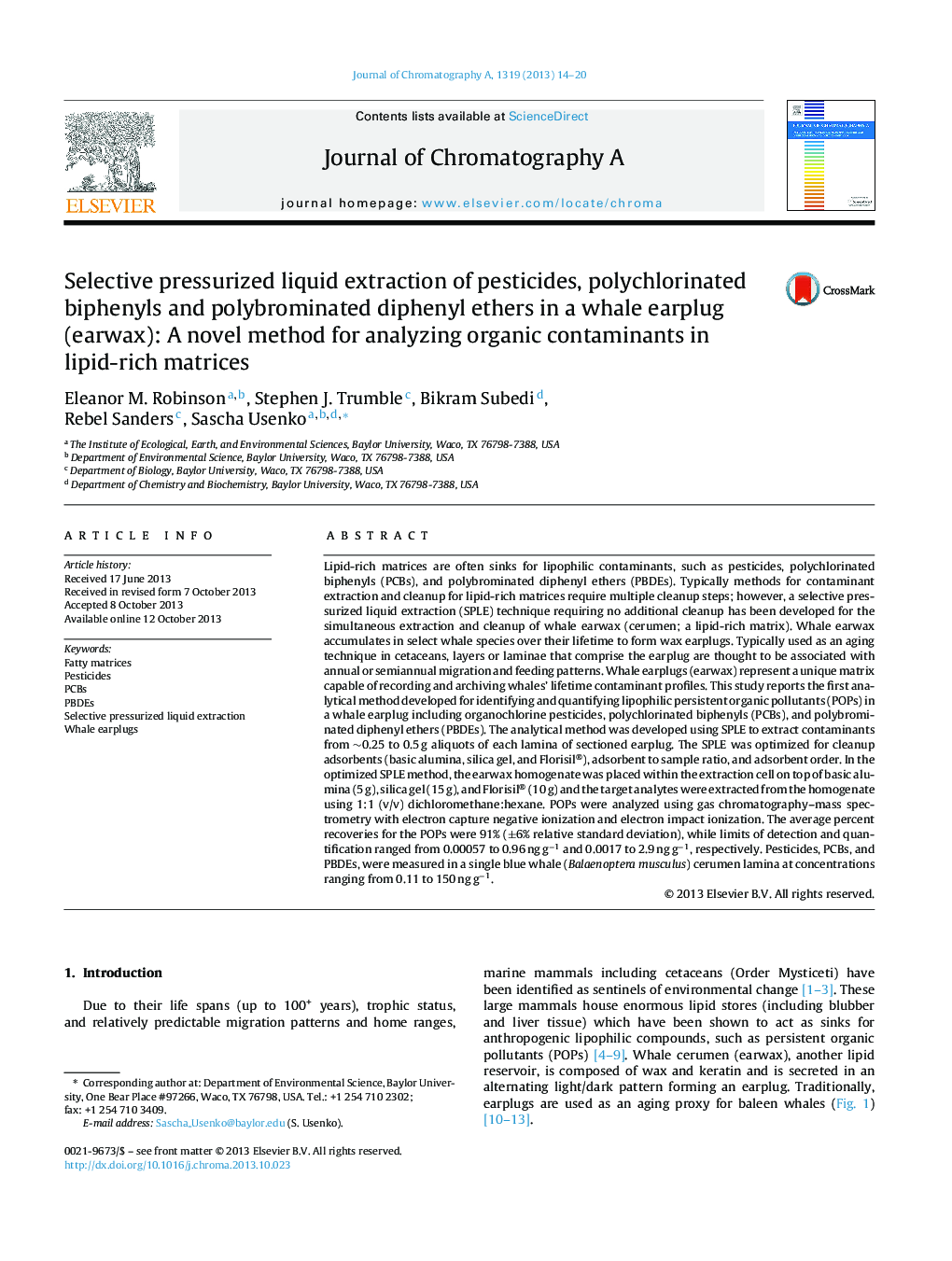| کد مقاله | کد نشریه | سال انتشار | مقاله انگلیسی | نسخه تمام متن |
|---|---|---|---|---|
| 1200733 | 1493607 | 2013 | 7 صفحه PDF | دانلود رایگان |

• Single automated step for the simultaneous extraction and cleanup of lipid-rich matrices.
• Analysis of pesticides, PCBs, and PBDEs in a lipid-rich matrix (whale earwax).
• Optimized adsorbent order within the ASE extraction cell using SPLE.
• Contaminant concentrations measured in blue whale cerumen (harvested 2007).
• Whale earplug as a matrix for reconstructing chemical profiles in marine ecosystems.
Lipid-rich matrices are often sinks for lipophilic contaminants, such as pesticides, polychlorinated biphenyls (PCBs), and polybrominated diphenyl ethers (PBDEs). Typically methods for contaminant extraction and cleanup for lipid-rich matrices require multiple cleanup steps; however, a selective pressurized liquid extraction (SPLE) technique requiring no additional cleanup has been developed for the simultaneous extraction and cleanup of whale earwax (cerumen; a lipid-rich matrix). Whale earwax accumulates in select whale species over their lifetime to form wax earplugs. Typically used as an aging technique in cetaceans, layers or laminae that comprise the earplug are thought to be associated with annual or semiannual migration and feeding patterns. Whale earplugs (earwax) represent a unique matrix capable of recording and archiving whales’ lifetime contaminant profiles. This study reports the first analytical method developed for identifying and quantifying lipophilic persistent organic pollutants (POPs) in a whale earplug including organochlorine pesticides, polychlorinated biphenyls (PCBs), and polybrominated diphenyl ethers (PBDEs). The analytical method was developed using SPLE to extract contaminants from ∼0.25 to 0.5 g aliquots of each lamina of sectioned earplug. The SPLE was optimized for cleanup adsorbents (basic alumina, silica gel, and Florisil®), adsorbent to sample ratio, and adsorbent order. In the optimized SPLE method, the earwax homogenate was placed within the extraction cell on top of basic alumina (5 g), silica gel (15 g), and Florisil® (10 g) and the target analytes were extracted from the homogenate using 1:1 (v/v) dichloromethane:hexane. POPs were analyzed using gas chromatography–mass spectrometry with electron capture negative ionization and electron impact ionization. The average percent recoveries for the POPs were 91% (±6% relative standard deviation), while limits of detection and quantification ranged from 0.00057 to 0.96 ng g−1 and 0.0017 to 2.9 ng g−1, respectively. Pesticides, PCBs, and PBDEs, were measured in a single blue whale (Balaenoptera musculus) cerumen lamina at concentrations ranging from 0.11 to 150 ng g−1.
Journal: Journal of Chromatography A - Volume 1319, 6 December 2013, Pages 14–20